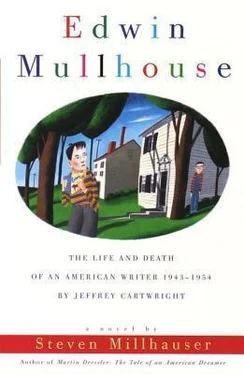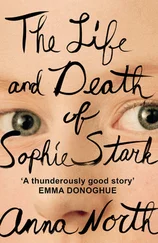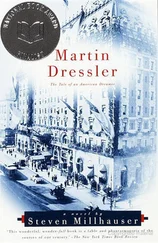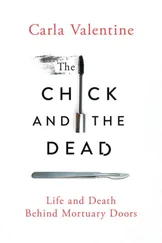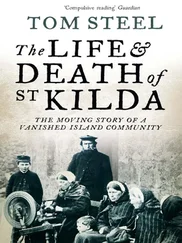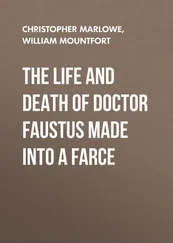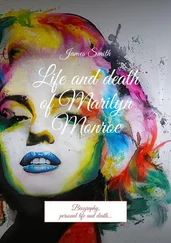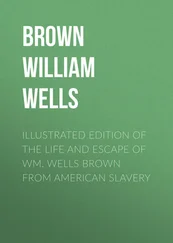Steven Millhauser - Edwin Mullhouse - The Life and Death of an American Writer 1943-1954
Здесь есть возможность читать онлайн «Steven Millhauser - Edwin Mullhouse - The Life and Death of an American Writer 1943-1954» весь текст электронной книги совершенно бесплатно (целиком полную версию без сокращений). В некоторых случаях можно слушать аудио, скачать через торрент в формате fb2 и присутствует краткое содержание. Год выпуска: 2011, ISBN: 2011, Издательство: Knopf Doubleday Publishing Group, Жанр: Современная проза, на английском языке. Описание произведения, (предисловие) а так же отзывы посетителей доступны на портале библиотеки ЛибКат.
- Название:Edwin Mullhouse: The Life and Death of an American Writer 1943-1954
- Автор:
- Издательство:Knopf Doubleday Publishing Group
- Жанр:
- Год:2011
- ISBN:9780307787385
- Рейтинг книги:3 / 5. Голосов: 1
-
Избранное:Добавить в избранное
- Отзывы:
-
Ваша оценка:
- 60
- 1
- 2
- 3
- 4
- 5
Edwin Mullhouse: The Life and Death of an American Writer 1943-1954: краткое содержание, описание и аннотация
Предлагаем к чтению аннотацию, описание, краткое содержание или предисловие (зависит от того, что написал сам автор книги «Edwin Mullhouse: The Life and Death of an American Writer 1943-1954»). Если вы не нашли необходимую информацию о книге — напишите в комментариях, мы постараемся отыскать её.
.
Edwin Mullhouse: The Life and Death of an American Writer 1943-1954 — читать онлайн бесплатно полную книгу (весь текст) целиком
Ниже представлен текст книги, разбитый по страницам. Система сохранения места последней прочитанной страницы, позволяет с удобством читать онлайн бесплатно книгу «Edwin Mullhouse: The Life and Death of an American Writer 1943-1954», без необходимости каждый раз заново искать на чём Вы остановились. Поставьте закладку, и сможете в любой момент перейти на страницу, на которой закончили чтение.
Интервал:
Закладка:
So spring surprised him: he had not expected quite that intensity of brightness. Spring that year was a great cracking and breaking, a green fever, an agony of trees; and for a moment Edwin was confused. For the death of Rose Dorn had plunged him into grief, and the season, like a bad stylist, failed to express his mood. At the same time, the season seemed to revive in him certain dangerous memories, best laid to rest. Perhaps the reason was this, that his obsession with Rose Dorn had been so much a part of fall and winter weather, of bare black trees and yellow leaves, of frosted windows and steamheated rooms, of white breath under freezing blue skies, that the bright loss of these things revived in him the loss of his first love of her. Or perhaps it was simply that he had learned to deal with her under the old conditions, which somehow explained her, or explained at least his sorrow and failure, which were only like the weather itself. But now new conditions had arisen, green warm budding conditions that spoke at once of tranquillity and adventure, and tormented him with visions of voyages to remote green islands where, in dark green shade pierced by rays of green sunlight, he and Rose Dorn would never walk.
Edwin barely spoke to me for a month. In class he leaned his chin on his hand and stared; after school he dragged himself slowly, slowly, slowly up to his room. “I don’t feel like it,” he would say, and it was generally his sole contribution to the conversation. After a month or so of this he came down with the chicken pox and was shut up in his room for three weeks, during which I was not even allowed to enter the house. He returned to school in early May, looking paler and thinner than usual, and proudly displaying a small round scar on his left wrist. He seemed somewhat more lively but had to spend most of the next week making up schoolwork. Thereafter his recovery was rapid. He began to throw himself into games again, arguing hotly, making puns, inventing new rules. One Saturday Dr. Mullhouse drove us all to a distant picnic ground, where dark brown tables were scattered among tall evergreen trees whose needles grew near the top. After lunch Dr. Mullhouse, making obscure jokes about pine Cohens and evergreen Levis, and wearing around his neck a light meter, a gadget-bag, and two cameras whose straps were adorned with little leather cases for filters, led us along a winding dirt trail that came out at a tall white waterfall, dropping crookedly into a brown stream. Edwin was delighted. There was also a stone bridge spanning the stream, and there is a picture of Edwin leaning over the parapet, looking over his right shoulder with a winking grin.
It was a warm blue morning in May. Edwin sat on the shady, rippling root of a fat old tilted tree that leaned over the brook at the end of Beech Street, casting a leafy shadow that rippled and bubbled on the water as if it were about to break loose and stream away. By his right foot lay a three-inch plywood boat shaped like the pointed side of a house, to which a small cube of wood, serving as a cabin or smokestack, had been carefully glued. I sat on a sunny root beside him, reflecting upon his difficult moods. There he sat, mournfully munching a peanut butter and jelly sandwich, sadly licking his sticky lips, pensively wiping his fingers on sticky waxpaper, and fixing his glum gaze on a quiet inlet in the uneven opposite bank, where from time to time the smooth surface of the water was gently shattered by the landing of some invisible insect. He had eagerly agreed to my plan of a little expedition to the end of Beech Street, going so far as to suggest that we make a whole day of it, complete with an elaborate lunch and various emergency supplies, such as pistachio nuts, cashews, licorice shoestrings, sugar wafers, and small red boxes of raisins. But once arrived, he mumbled something about having all day, chose the first shady spot in sight, sat himself glumly down, and fell into a condition of such gloomy meditation that I dared not disturb him, not even when he absently began to eat his lunch some two hours before the usual time. I was in foul spirits, for it seemed unlikely that we would ever get to sail our boat. But mostly I was distressed by what I considered an unhealthy backsliding into unruly grief.
Rippling and bubbling, the shadow extended more than halfway across the stream. A fringe of tall yellow grass was reflected as spots of yellow in the sunlit ripples of the opposite bank. But in the quiet inlet, the precise stalks were reflected as in a dark mirror. High overhead, in a glowing sky, a bright white three-dimensional cloud, molded with blue shadows, looked so plump and heavy that I don’t know how it stayed up there. Spots of blue and white danced on the ripples. Here and there the leafy shadow was punctured by bright shifting patches of light — one of which, I suddenly noticed, played over an orange and black orange-juice can that lay, now dark, now gleaming, at the bottom of the water. Glancing at gloomy Edwin, who was still immersed in his lunch, I stood up, stepped to the water, scooped up a handful of small cold stones that gleamed in the sunlight, and proceeded to toss them at the winking can. I missed on the first three tries, but on the fourth I heard a highly satisfying clank.
“Shhh,” said Edwin.
“But,” I began to shout.
“Jeffrey,” he said, and in that eager accent I recognized my old friend, “which is best: Edwin’s Weekly? The Mullhouse News? The Mullhouse Post? or Edwin’s Gazette?”
19
THE IDEA OF A FAMILY NEWSPAPER did not originate with Edwin but with page 46 of A Boy’s Treasury of Things-to-do, which he had received for his seventh birthday (more than nine months before) and had not looked at until the day before the preceding chapter. No matter. The true artist is not an inventor but a finder and user — in this instance, of a boy’s book of games. The paper first appeared on Sunday, June 3, 1951, and continued to appear regularly once a week through Sunday, July 1. After a lengthy pause occasioned by a visit from Grandma Mullhouse, during which Edwin displayed a consuming passion for Lotto, the paper reappeared on Friday, July 13. It continued thereafter on a regular daily basis, stopping abruptly — and forever — with the issue of July 31. (On August 1, Edwin’s eighth birthday, he received among other treasures a Monopoly set, a Brownie camera with two yellow rolls of film, and a fascinating wooden box the size of a small desk-drawer, whose movable top, controlled by red wooden knobs on all four sides, was a raised maze full of numerous holes, past which you tried to steer a marble-sized steel ball.) Altogether there were twenty-four issues of what Edwin finally chose to call The Family Newspaper, the bland name suggested by his source.
The five weeklies and the first three dailies consist of three pages each, but the strain of daily production soon told upon Edwin, and the remaining sixteen issues are all two pages long. The format is simple, and is modeled closely on the newspaper pictured in the Boy’s Treasury. The first page of each issue has a wide space on top, where the title appears in large capital letters; “THE” is generally but not invariably centered above “FAMILY NEWSPAPER.” Beneath the title are two ruled parallel lines exactly one-half inch apart, in which the date is printed in small capital letters. The page is then divided into four columns, of various widths, by ruled vertical lines that extend from the dateline to the base of the page. Second and third pages are titleless but have a narrow space at the top where “page 2” or “page 3” is printed; the second page is visible above the first page and the third above the second, in the manner of a row of cards in a game of solitaire. The pages are joined at the top by means of three and sometimes four pieces of Scotch tape that begin below the dateline on the front page, proceed upward over succeeding pages, and end several inches down the back of the last page. The general appearance is far from neat. Not only are the strips of tape crooked and ugly, but the numerous short horizontal lines separating headline and article are drawn without the aid of a ruler; and to tell the truth, Edwin’s printing is uniformly dreadful. All words are printed in small capital letters, and although the letters of the headlines are usually larger than the letters of the articles, this is not always the case, so that sometimes it is difficult to distinguish a headline from an article, especially since many articles are extremely short.
Читать дальшеИнтервал:
Закладка:
Похожие книги на «Edwin Mullhouse: The Life and Death of an American Writer 1943-1954»
Представляем Вашему вниманию похожие книги на «Edwin Mullhouse: The Life and Death of an American Writer 1943-1954» списком для выбора. Мы отобрали схожую по названию и смыслу литературу в надежде предоставить читателям больше вариантов отыскать новые, интересные, ещё непрочитанные произведения.
Обсуждение, отзывы о книге «Edwin Mullhouse: The Life and Death of an American Writer 1943-1954» и просто собственные мнения читателей. Оставьте ваши комментарии, напишите, что Вы думаете о произведении, его смысле или главных героях. Укажите что конкретно понравилось, а что нет, и почему Вы так считаете.
